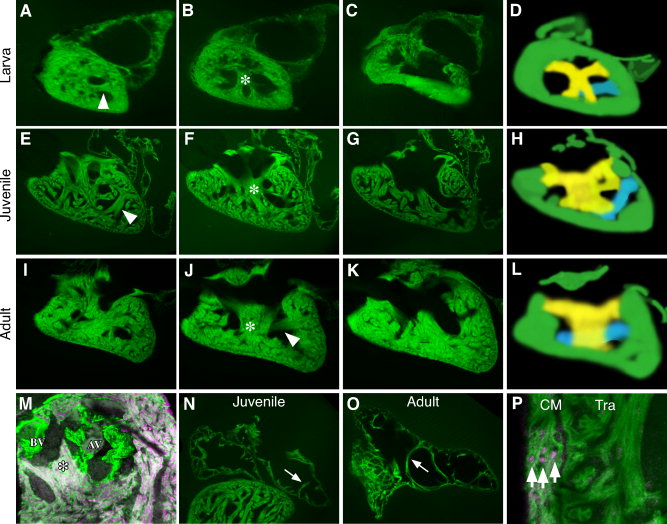Fig. 6 Internal chamber organization. A-L: The ventricular myocardium is highly trabeculated by the early larval stages and becomes progressively more organized during maturation. A-L: Serial sections of Tg(myl7:GFP)twu34 hearts during different stages of maturation. A–C are larval, E-G are juvenile, and I–K are representative adult hearts. During maturation, two clear muscle groups become apparent. A transverse band (arrowhead) can be seen in A, E, and J and is depicted in blue on the diagram in D, H and L. A tri-tipped muscle (*) in B, F and J and depicted in yellow on the diagram in D, H and L. (M) The tri-tipped muscle (false-colored magenta with Tg(-5.1myl7:nDsRed2)f2) can be seen attached the base of the AV and BV valves (labeled green with Tg(fli1a:EGFP)y1). The atrium is significantly less trabeculated than the ventricle even during larval and adult stages however pectinate muscles are observed (arrows in N,O). P demonstrates the presence of a clear ventricular compact myocardium (CM) adjacent to the trabeculae (Tra) that is three cell layers thick in this cross section of an adult heart (arrows) with myocardial nuclei false-colored magenta using Tg(-5.1myl7:nDsRed2)f2 and the myocardial cells green with Tg(myl7:GFP)twu34.
Image
Figure Caption
Figure Data
Acknowledgments
This image is the copyrighted work of the attributed author or publisher, and
ZFIN has permission only to display this image to its users.
Additional permissions should be obtained from the applicable author or publisher of the image.
Full text @ Dev. Dyn.

